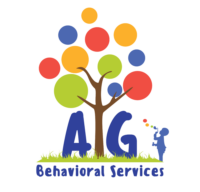What Is Caregiver Skills Training (CST)?
Caregiver Skills Training (CST) is a program developed by the World Health Organization (WHO) to help parents and caregivers of children with developmental delays or autism spectrum disorder (ASD) build essential skills to support their child’s communication, social, and emotional development.
Unlike traditional therapy sessions that take place a few hours a week, CST empowers caregivers to embed learning into everyday routines—like playtime, mealtime, or getting dressed. The goal is to help children grow through natural, meaningful interactions while strengthening the bond between parent and child.
CST is now offered through many community-based programs, autism service providers, and parent training workshops across the world. In the U.S., several organizations and clinics integrate CST-inspired strategies into family coaching and Applied Behavior Analysis (ABA) sessions.
What Does “Respond and Expand” Mean?
One of the most practical and effective strategies taught in CST is called “Respond and Expand.” It’s designed to make daily interactions more engaging and help children build communication skills in a natural, low-pressure way.
Here’s how it works:
1. Respond
Notice what your child is saying or doing—whether that’s using words, gestures, eye contact, or sounds—and respond to show that you understand.
This validates your child’s communication attempt and encourages them to keep sharing.
Example:
- If your child says “car,” you can respond, “Yes, a car!”
• • If your child points to a snack, you can say, “You want a cookie!”
Recent Posts
- Understanding Autism in 2025: New Data Reveals Rising Prevalence and Changing Demographics
- “Respond and Expand”: A Simple Way to Boost Communication in Children with Autism
- What Causes Autism? Understanding the Factors Behind ASD
- Are Autism Rates Rising?
- What Does a BCBA Do—and How Do You Become One?
2. Expand
After responding, add a little more information to your reply—just one or two extra words or ideas.
This helps your child hear richer language and learn new ways to express themselves.
Example:
- Child: “Car.”
- Parent: “Yes! A red car is driving fast!”
- Child: points to juice
- Parent: “You want more orange juice.”
It’s simple, but powerful. You’re modeling how to build longer sentences and new vocabulary in a way that feels fun and natural.
Why “Respond and Expand” Works
This approach builds on your child’s interests and current communication level—so it’s always developmentally appropriate. Instead of directing or correcting, you’re following their lead and adding just enough language to move them forward.
Research has shown that when children feel heard and understood, they are more likely to engage, learn, and communicate. “Respond and Expand” encourages:
- Two-way communication – your child learns that communication is a back-and-forth process.
- Language growth – hearing slightly more advanced speech helps them develop new words and grammar naturally.
- Emotional connection – responding warmly reinforces trust and strengthens your relationship.
How to Use “Respond and Expand” in Everyday Life
You can use this strategy anytime—no special materials or setup required. Here are a few examples:
- During Playtime:
When your child builds with blocks, say, “You made a tower! Let’s make it taller!” - At Mealtime:
If your child says “juice,” respond and expand: “You want more orange juice!” - During Outdoor Activities:
If they point to a bird, you might say, “Yes, a big blue bird is flying!”
Each time you respond and expand, you’re helping your child build communication confidence in a calm, joyful way.
Helping Parents Feel Empowered
Many parents feel pressure to “do therapy right,” but the truth is, small, consistent moments of connection can have a huge impact. You don’t need to be a therapist—you just need to be tuned in and responsive.
Programs like CST are designed to teach parents how to teach, making them an active part of their child’s developmental journey. Over time, this approach leads to stronger communication, better understanding, and a more connected relationship between parent and child.
Helpful Resources for Parents
- World Health Organization: Caregiver Skills Training Program
- Autism Speaks: Parent Training and Support Resources
- Centers for Disease Control and Prevention (CDC) – Learn the Signs. Act Early.
- UNICEF Early Childhood Development Resources
Final Thoughts
Communication isn’t just about words—it’s about connection.
By using the “Respond and Expand” technique, you’re not just teaching your child how to talk—you’re showing them that their voice matters, and that you’re listening.
If you’re interested in learning more about Caregiver Skills Training (CST) or parent-led ABA support, please reach out to a AGBS. AGBS provides ongoing care for children, adolescents, and young adults with autism to improve the quality of their lives. If you would like learn more about how AGBS can help please contact us here , or call 908-913-0443.




